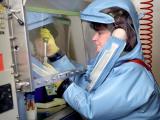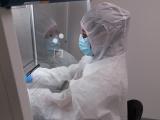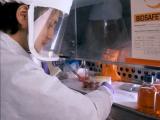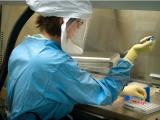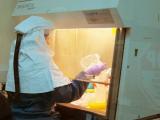May 3, 2004 (CIDRAP News) The US Department of Agriculture (USDA) last week announced it would spend $18.8 million to begin a three-stage process for setting up a national animal identification system to help contain animal disease outbreaks.
Agriculture Secretary Ann Veneman said the goal of the effort is a system to identify farms and other sites exposed to foreign animal diseases.
Shortly after a case of bovine spongiform encephalopathy (BSE) was discovered in Washington state last December, Veneman promised her department would speed the development of an identification system for all species of food animals. In investigating the BSE case, officials traced the infected cow to its birth herd in Canada and subsequently found 28 of 81 cows from that herd, but they never found the rest.
"While many livestock species in the United States can be identified through a variety of systems, a verifiable system of national animal identification will enhance our efforts to respond to intentionally or unintentionally introduced animal disease outbreaks more quickly and effectively," Veneman said in an Apr 27 news release.
The USDA said it has funded several pilot projects for animal identification in recent years. The first step in setting up the national system will be an evaluation of the pilot projects to determine which should be used in a national system, officials said. Also in the first stage, the USDA will talk with stakeholders about how to operate a system and will develop any regulations and legislation needed to support the system.
The second stage will involve implementing the selected identification system at a regional level for one or more species, along with continued work on communication, regulations, and legislation, the USDA said. In the third stage, the system will be scaled up to the national level.
At a news briefing, Bill Hawks, USDA under secretary for marketing and regulatory programs, said, "We want to be able to track animals within a 48-hour time period. It's very important for disease control purposes to do that. We want to know where the animals have been." The USDA published a transcript of the briefing online.
Hawks said the effort has been transferred to USDA's Animal and Plant Health Inspection Service (APHIS).
APHIS Administrator Ron DeHaven said about two thirds of the $18.8 million will be used to evaluate the animal identification pilot projects, and much of the rest will be used to develop the "initial infrastructure" for a national database.
DeHaven said the database would be big. "We're talking about 100 million animals potentially at the end of the day when we have a fully functional system," he said.
He said he envisioned a system in which data from farms and livestock markets would go into state-level databases. Then, perhaps daily or weekly, the state-level systems would feed data needed for animal disease tracking purposes into the national database.
DeHaven said the pilot projects involve several technologies, including radio frequency identification chips, retinal scanning, and DNA testing.
Veneman said both private money and additional public funds beyond the $18.3 million will be needed to create a functional national system. The Bush administration's proposed USDA budget for fiscal year 2004 includes $33 million for the system, officials said.
See also:
Apr 27 USDA news release
http://www.usda.gov/Newsroom/0170.04.html
Transcript of Apr 27 USDA briefing
http://www.usda.gov/Newsroom/0171.04.html

